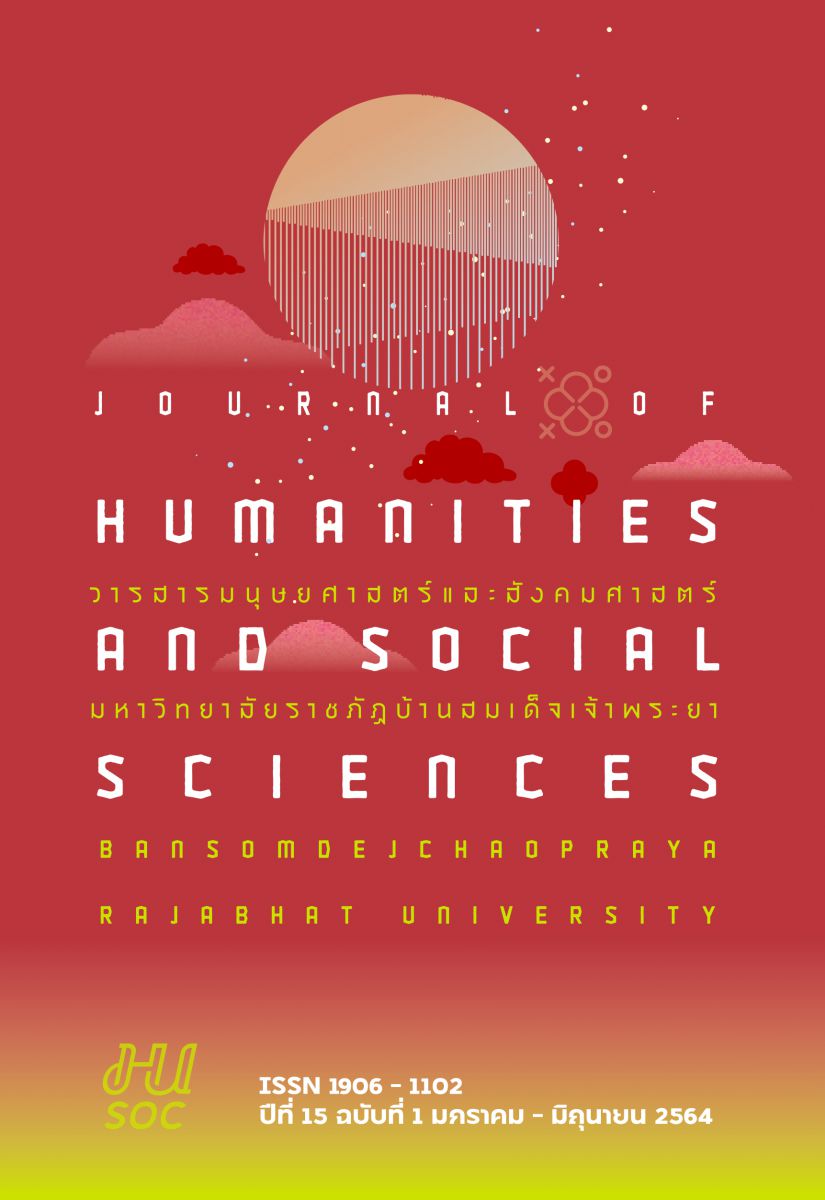การจัดกิจกรรมการเรียนรู้นอกห้องเรียนสำหรับเด็ก
คำสำคัญ:
การศึกษานอกห้องเรียน, การจัดการเรียนรู้โดยผ่านประสบการณ์นอกห้องเรียน, การจัดกิจกรรมการเรียนรู้นอกห้องเรียนบทคัดย่อ
การจัดการเรียนรู้โดยผ่านประสบการณ์นอกห้องเรียนมีลักษณะการเรียนแบบสหวิทยาการ เป็นหน่วยการเรียนที่บูรณาการศาสตร์ต่าง ๆ เข้าด้วยกัน นับเป็นการเชื่อมโยงประสบการณ์การเรียนรู้ของเนื้อหาที่เรียนในห้องกับแหล่งเรียนรู้อื่น ๆ นอกห้องเรียน ซึ่งอาจเป็นชุมชน ธรรมชาติแวดล้อม หรือสถานที่อื่น ๆ ตามหัวข้อที่ศึกษา ในบทความนี้ได้นำเสนอหน่วยบูรณาการเรื่อง “กล้วย” อันประกอบด้วยกิจกรรมการเรียนรู้นอกห้องเรียนที่หลากหลายที่ใช้ได้กับทุกกลุ่มสาระการเรียนรู้ในระดับประถมศึกษา นับเป็นการขยายประสบการณ์การเรียนรู้ภายในห้องเรียน ช่วยทำให้เด็กเข้าใจเนื้อหาที่ศึกษาได้ลึกซึ้งมากขึ้น อีกทั้งเป็นการพัฒนาทักษะซึ่งเป็นทักษะที่สำคัญในศตวรรษที่ 21 รวมถึงทักษะการสังเกต การคิด การแก้ปัญหา การสื่อสาร การทำงานร่วมกันตลอดจนการปลูกฝังจิตสำนึกในการอนุรักษ์ทรัพยากรธรรมชาติและสิ่งแวดล้อม
เอกสารอ้างอิง
สำนักงานเลขาธิการสภาการศึกษา. (2560). แผนการศึกษาแห่งชาติพ.ศ. 2560 - พ.ศ. 2579. กรุงเทพฯ: พริกหวานกราฟฟิค.
อรนุช ลิมตศิริ. (2563). การบูรณาการหน่วยการเรียนเรื่อง “กล้วย”. กรุงเทพฯ: ภาควิชาหลักสูตรและการสอน คณะศึกษาศาสตร์ มหาวิทยาลัยรามคำแหง
Behrendt. M. & Franklin. T. (2014). A review of research on school field trips and their value in education. International journal of Environmental & Science Education, 9, 235-245.
Brookes, A. (2004). Can outdoor education be dispensed with? A critical review of some common rationales for outdoor education. Paper presented at Connections and Disconnections: Examining the reality and rhetoric. International perspectives on outdoor education theory and practice, Australia: La Trobe University Bendigo, Bunting.
Camille J. (2006). Interdisciplinary teaching through outdoor education. Champaign, IL: Human Kinetics.
Cooper, G. (2010, Spring). Outdoor Learning: environmental and sustainability-Seeing the big picture. Horizons. 49, 4-8.
Dewey, J. (1938). Experience and education. New York: Touchstore.
Donaldson, G. & Donaldson, L. (1958). Outdoor education: A definition. Journal of Physical Education: Recreation & Dance, 29(17), 17-63.
Dowling, H. J. (1978). Outdoor education: Why outdoor education. New York: Destandes.
Freebery, W., & Taylor, I. (1963). Programme in outdoor education. Minneapolis, MN: The Burgess.
Gilberston. K., & others. (2006). Outdoor education methods and strategies. Champaign: Human Kinetics.
Hammerman, D.R., Hammerman, W.M. & Hammerman, E.L. (1994). Teaching in the outdoor. America: CL Interstate.
Hammerman, D.R., Hammerman, W.M. & Hammerman, E.L. (2001). Teaching in the outdoor. Danville IL. Inte.
Higgins, P., Loynes, C. & Crowther, N. (1997). A Guide for Outdoor Education in Scotland. Penrith: Adventure Education.
Hungerford, H.R. & Volk, T.L. (2013). Changing learner behavior through environmental education. Retrieved 20 March 2018, from ttp://doi.org/10.1080/00958964.1990.10753743.
Leather. M & Porter, S. (2006). An outdoor Evolution: Changing name, changing contexts, constant values. Shaping the outdoor profession through Higher Education Creative Diversity in Outdoor Studies Courses in Higher Education in the UK.
Humberstone, B & Brown, H. Editors.Martin. P. (2001). Key issues in the industry: towards the Summit in Education Outdoors-Our sense of Place: 12th National Outdoor Education Conference. Conference proceedings. Victory. Australia.
Priest, S. (1986). Redefining outdoor education: A matter of many relationships. Journal of Environmental Education, 17(3). 13-15.
Priest, S. (1990). The semantics of adventure education. In Adventure education. State College. PA: Venture.
Rickinson, M, et al. (2004). A Review of Research on Outdoor Learning National Foundation for Educational Research and King’s College London. London: FSC.
Sharp, L.B. (1973). Basic Consideration in outdoor and camping education. New York: The Bulletin of The National Association of Secondary School Principals.
Smith, J.W., et al. (n.d.). Outdoor education. (2nd ed.). Englewood cliffs, New Jersey: Prentice-Hall.
ดาวน์โหลด
เผยแพร่แล้ว
รูปแบบการอ้างอิง
ฉบับ
ประเภทบทความ
สัญญาอนุญาต
ลิขสิทธิ์ (c) 2021 คณะมนุษยศาสตร์และสังคมศาสตร์ มหาวิทยาลัยราชภัฏบ้านสมเด็จเจ้าพระยา

อนุญาตภายใต้เงื่อนไข Creative Commons Attribution-NonCommercial-NoDerivatives 4.0 International License.




